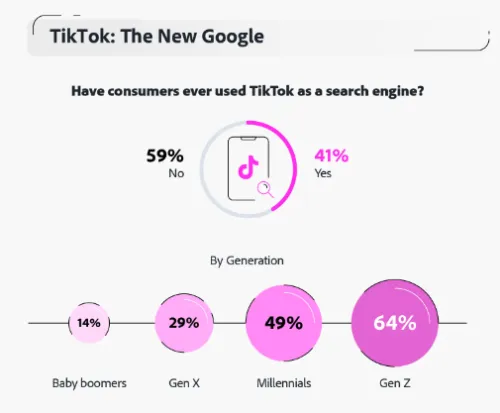Based on a recent Statista survey from 2023 conducted among loyal customers worldwide, the main purchasing factors are: an abundant product range (81%), product availability (80%), data privacy policy (79%), and good customer service (77%).
It is clear that an accurate understanding of the customer experience is of great importance. To effectively monitor customer experiences and make informed decisions, you need reliable data for information and insights. Adopting a data centric way of working is the way to achieve this.
Ultimately, data provides you and your teams with information and customer insights to improve the customer experience. To observe your customers' behavior and use this knowledge to refine the customer journey, you must rely 100% on data. A data centric approach where everyone relies on customer data is essential.
This article delves into various common risks associated with maintaining data quality. It also covers the necessary conditions for its retention, such as effectively managing data privacy and compliance, and the criteria for establishing a data centric organization.
The Most Common Data Quality Risks
- Accidentally using personally identifiable information (PII), such as including email addresses of your paying customers in the URL parameters. Violating GDPR legislation with fines and reputational damage is a consequence. Not very common, but it carries an extremely high risk. We saw this happen once last year.
- Important decisions cannot be fully supported with actionable information due to the loss of analytical measurements after a development update. A data gap (a week or even longer) is common practice in multiple organizations. And as you can imagine, this makes it harder to rely on long-term analyses, as you cannot draw conclusions based on year-to-year analyses in the same period. We see these challenges arise every quarter.
- Overabundance of data and tracking methods: With the abundance of data available today, it's easy to become overwhelmed by the sheer volume of information. It's important to prioritize collecting data that aligns with your organization's objectives and KPIs. Additionally, a streamlined approach to tracking methods can help ensure consistency and accuracy.
- Attribution models and discrepancies: Different advertising and social media platforms often have different attribution models, leading to discrepancies in the reported figures. Setting up a standardized attribution model or understanding the differences between platforms can help reduce confusion. Regularly checking and comparing data from different sources can also help identify inconsistencies.
- Lack of consistency in reporting and defining KPIs: Consistency in reporting is crucial for building trust in data-driven decisions. Having standardized reporting templates, guidelines, and protocols can ensure that data is interpreted consistently across all departments.
Ideally, Key Performance Indicators (KPIs) and tracking methods should be consistently defined across the entire organization. This promotes a uniform understanding of the objectives and ensures that everyone is working towards the same goals. However, it's important to allow some flexibility to adapt to specific departmental needs while maintaining alignment with the overall organizational strategy.
Managing Data Privacy and Compliance
Proper configuration leads to privacy and compliance. Incorrect privacy settings can result in the unintended collection and storage of sensitive data. Managing data privacy and compliance means ensuring that privacy settings are correctly configured and maintained to comply with applicable legislation, such as GDPR.
You obviously want to avoid fines and reputational damage. Using a GDPR monitor, including a dashboard with real-time alerts, can help by automatically monitoring the presence of personally identifiable information (PII) in the data.
Who has access to which personally identifiable information (PII)?
A crucial aspect of compliance is accurately using user rights and properly managing access to GA4 data. Mishandling user rights and access controls can lead to unauthorized access to GA4 data.
It is absolutely necessary to strictly limit access to authorized users to prevent sensitive data from falling into the wrong hands. This helps prevent data breaches and potential legal consequences.
The Importance of Continuously Monitoring and Storing Valuable Data
A good analysis implementation is obviously required to collect and store data to obtain information and ultimately insights. On one hand, we see that much data is labeled as 'priceless' due to the wrong way the data was collected. Knowing that you only have one chance to collect it correctly; the way you collect data must be right before collection begins.
Maintenance is another necessity. On the other hand, we often see that historical information is no longer available due to incorrect retention settings. Now trends can no longer be discovered, and valuable analysis is no longer possible.

Setting up (including maintenance) and data storage are the first two phases of the 6-phase data model. These first two steps are 'collection' and 'storage' of data are essential. The later stages; 'transforming', 'visualizing', 'analyzing', and let alone 'activating' data is not possible without the first strong data fundamentals; 'collection' (both setup and maintenance) and 'storage' (based on correct retention periods).
How to Maintain Data Quality?
As analytics platform vendors continuously change existing features on their platform or launch new ones, organizations often struggle with outdated analytics setups. This makes valuable data unusable, leading to a waste of data investments.
To counter this issue, an automated data quality monitor closely monitors your analytics configuration, providing real-time notifications to the team when adjustments are needed. This mechanism ensures the maintenance of strict data quality standards at minimal cost.
How to Minimize Data Loss?
Using a data quality monitor, you can automatically compare today's data trends with those of the previous day. By comparing your daily data, you receive crucial alerts, allowing you to identify cases where a conversion (previous goal completion) has changed due to changes on your website.
Comparing daily traffic data with, for example, flag-tagging issues can then be resolved immediately. It also ensures a seamless flow of qualitative data to your data storage location. Then the process of transforming, visualizing, and analyzing data can begin.
How to Conduct Reliable Data Analysis: The Well-Known '360 Customer View'
To conduct reliable data analysis, you must first ensure that events are correctly set up and that filters are accurately configured to ensure reliable reports. Incorrect configuration can result in inaccurate data and analyses when, for example, certain events or traffic are excluded. This can lead to incorrect conclusions, poor decision-making, and missed opportunities for improvement.
In the future, additional focus areas include understanding the distinction between universal analytics and GA4, navigating the complexity of different reported conversion rates, and constructing attribution models.
The Difference Between Universal Analytics and GA4 Output
We have all seen the differences between the output in Universal and GA4 analytics. These differences result in a decrease in data trust among our colleagues; the people we want to convince of our analytics insights.
There is also a difference between the data displayed in the GA4 interface and the raw data. Although Google might say they show you all the data, GA4 does not show you 100%. The reason behind this is the focus on speed. Google wants to compete with other analytics platforms based on interface load time. One technique they used to achieve this is estimating sessions. This is based on a smaller subset of the data. This also explains the differences between UA and GA4 output.
Why Do Reported Conversion Rates on Social Platforms Differ from Those on Your Analytics Platform?
You may have noticed the differences in how conversions are attributed to paid ads or social channels. Why does TikTok, for example, report a higher number of conversions than your analytics platform? Even within our agency, META is a frequently mentioned name when discussing differences in conversion reports.
These differences stem from the underlying business model of the ad and social platforms. They benefit from a higher number of conversions. How conversions are attributed to the platform and why the number of conversions differs is due to attribution.
Different methods are used that assign credit to different marketing channels or touchpoints along the conversion path. GA4 now uses three different attribution models:
- Default channel group for new users: First click
- Default channel group for sessions = Last click
- Default channel group for conversions = Data Driven
Build Your Own Attribution Model
You can give your organization control over the challenges arising from the differences between attribution models by creating and managing your own attribution model. If you want to fully leverage all available GA4 data, using BigQuery can be a viable option.
Through the integration of the BigQuery plugin, raw data can be used. Using SQL, your team can reproduce and even customize the reporting options available in GA4. This allows you to define and use rule-based marketing attribution models, using logic that you own and can change. This puts you in the driver's seat of attribution!
What Are the Conditions Needed to Transform into a Data Centric Organization?
While data-driven digital marketing focuses on using data as a tool, data centric digital marketing goes a step further by considering data itself as a valuable asset. It means viewing data as an essential business asset that is central to decision-making and developing marketing strategies.
Collecting, storing, and managing data is key to gaining valuable insights into customer behavior and trends. A data centric approach is essential for organizations looking to grow and compete in a digital environment. By viewing data as a valuable asset, companies can differentiate themselves from their competitors and gain valuable insights that lead to effective marketing strategies and better customer experiences.
The Four Fundamental Aspects for a Data Centric Organization
- Maintenance: Data quality is well set up and constantly maintained;
- Knowledge: uniform understanding among all stakeholders of the company regarding tracked elements and the meaning of different metrics;
- Application: Every employee knows how to use data where relevant and possible;
- Trust: fostering a sense of trust in and reliance on data throughout the organization.
An example illustrating how our client helps all stakeholders across the organization understand both the tracked elements and the different metrics is through the use of a 'KPI catalog'. This catalog includes all triggers and definitions of measures, presented in understandable language for all stakeholders within their organization.
Conclusion
Research underscores the great importance of data quality in a data centric approach to business. Understanding customer preferences, making decisions, and improving customer experiences depend on accurate and reliable data.
Data privacy, consistency, and proper configuration play a crucial role in maintaining data quality.
Organizations must establish strong data fundamentals, automated quality monitoring, and reliable analysis implementation to address challenges and unlock the benefits of a data centric approach.
Trust, knowledge, application, and maintenance are the cornerstones of such a transformation, enabling effective decision-making and superior customer engagement.
Reliable data and employee trust in data are fundamental to building thriving data centric organizations in the future.
Need Help with Data Quality Monitoring?
```




